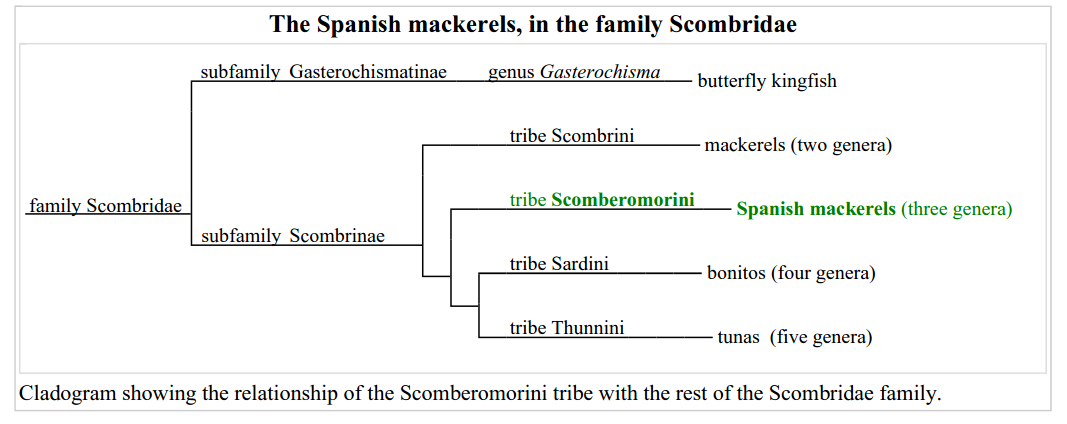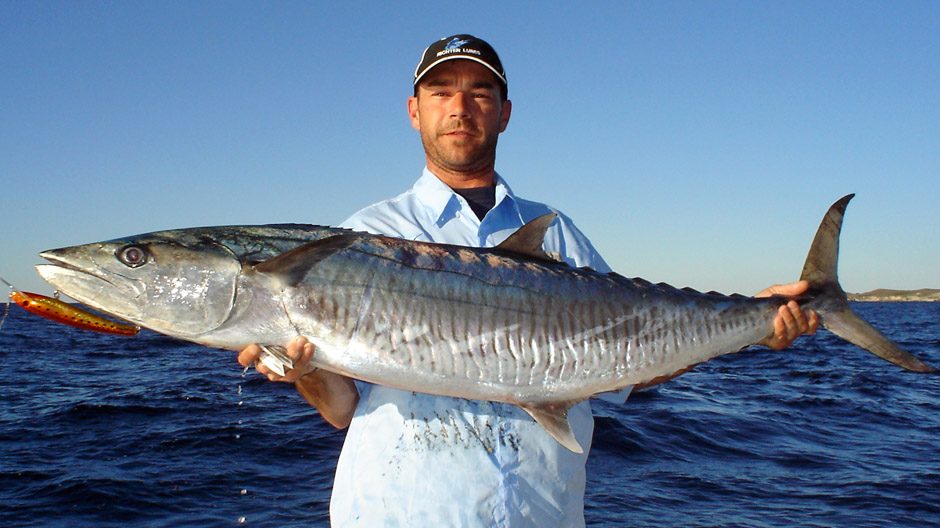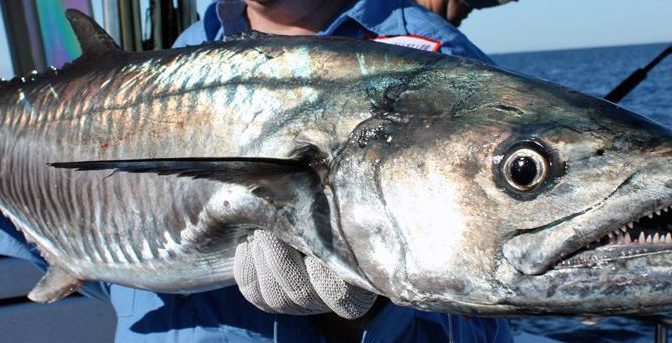
The King Mackerel family
The King Mackerel / Couta (Africa) also known as a Spanish Mackerel (Americas and Australia) or King Fish (Middle east) are members of the large Scomberomorini family. Although actually different species these fish look very similar and are often confused with one another and generally referred to one of the three names above.
Below is a breakdown of the full family, click on the links to learn more about each species. The size of the different mackerel may vary but the way they hunt and how we catch them is fairly similar.

This tribe comprises 21 species in three genera:
Acanthocybium
- A. solandri - wahoo
Grammatorcynus
- G. bicarinatus - shark mackerel
- G. bilineatus - double-lined mackerel
Scomberomorus
- S. brasiliensis - Serra Spanish mackerel - 6.7kg
- S. cavalla - king mackerel - 40kg
- S. commerson - Narrow-Barred Spanish mackerel - 70kg
- S. concolor - Monterrey Spanish mackerel - 3.6kg
- S. guttatus - Indo-Pacific king mackerel - 45kg
- S. koreanus - Korean seerfish
- S. lineolatus - streaked seerfish
- S. maculatus - Atlantic Spanish mackerel - 5kg
- S. multiradiatus - Papuan seerfish
- S. munroi - Australian spotted mackerel - 10kg
- S. niphonius - Japanese Spanish mackerel - 10kg
- S. plurilineatus - Kanadi kingfish - 12.5kg
- S. queenslandicus - Queensland school mackerel - 12.2kg
- S. regalis - Cero mackerel - 14kg
- S. semifasciatus - broadbarred king mackerel - 10kg
- S. sierra - Pacific sierra
- S. sinensis - Chinese seerfish
- S. tritor - West African Spanish mackerel - 6kg

The Trophy Fish
The three largest of the mackerel family are the trophy fish that big game anglers around the world target. These three all grow upwards of 40kgs and all look very similar and hence are often confused.
The Narrow-Barred Spanish Mackerel is the largest of the group. Although they get up to 70kgs, fish that size are almost unheard of these days. Generally a fish over 40kgs is considered an absolute monster with the majority of fish between 10kg to 30kgs. These boys are caught throughout the Indian Ocean from South Africa all the way across to Australia and Fiji.
The King Mackerel is caught around America, Florida, Caribbean and Mexico. Mostly between caught 5kg to 14kgs but can get up to 40kgs.
The Indo-Pacific King Mackerel is found around Australia and the Indo Pacific Islands. Again generally around 10kg to 30kgs but they grow up 45kgs.
How to target and catch Mackerel
Before being able to catch them we must first understand where they hangout and how these furious predators feed. Generally all the mackerel species are open water predators that migrate along the coastline at the change of seasons. As juveniles they often form shoals that hunt the inshore reefs. As they mature they tend to hunt in smaller packs of a few individuals, with a old crocs often patrolling by themselves.
Throughout their life cycle mackerel feed primarily on live fish, the size increasing as they grow larger. The smaller mackerel feed on sardines, massbanker, mackerel etc, generally they will feed on shoaling baitfish found in each area. The larger mackerel will eat anything from mullet and shad / bluefish / tailor to bonito and small tuna.
Tackle and Lures
King Mackerel all have razor sharp teeth and an impressive turn of speed. Once hooked they make a distinctive first run, tearing off at a rate of knots. Obviously the larger the fish the stronger and further the first run is and because of this a reel with smooth drag is essential. Although they’ve strong, stunning fish to catch they’re also clean fighters that stay high in the water column away from the rocks. Meaning provided you have a good amount of line on your reel you can target mackerel on lighter tackle than you would for GT for example. The size of your setup purely depends on the size of the fish your expecting to catch.


5kg to 10kgs Fish
These smaller fish are great fun on light to medium tackle. A fast action rod paired with a good quality spinning reel such as one of Shimano’s saltwater reels in the 5000 range with 20-30lb braid. Examples of rods would be:
| Offshore – Medium | 30g – 100g | PE 2-4 | 2.1m (7’6”) – 2.7m (8’6”) | ASSASSIN – SPIN – ASSG7 / ASSG8 |
10kgs to 25kgs
Now we’re starting to talk of a serious size fish and need serious tackle to pull these boys in. You’re looking at a fast action rod with a decent back bone paired with 8000 or 10000 Stella or Saragosa. If you are fortunate enough to hook a larger fish this tackle can handle it but you’ll have play it for all you’re worth.
| Offshore – Heavy | 50g – 150g | PE 4-8 | 2.1m (7’6”) – 2.7m (8’6”) | ASSASSIN – SPIN Master Series – ASMP86-2XH |
Terminal Tackle and Lures
As always you’ll need a good quality fluorocarbon leader but because of their razor sharp teeth a short piece of wire is needed.
0.6mm to 0.9mm Leader and No 3 to 5 piano wire is ideal. Because they feed primarily using sight and hunt in clean water the lighter you go the more pulls you’ll get.
Traditional methods for catching include slow trolling live baits and rapalas. On spinning tackle its all about imitating the baitfish they’d normally feed on. With that in mind we find the most successful lures are stick-baits, vertical jigs and spoons. All of which have lots of flash and a quick action. Colours that work well are red head with white body, sardine, white and silver.
Releasing them to fight another day
Once hooked all the mackerel species will fight with everything they have, often fighting to the point of death. When catching them care must be taken to get the fish to side as quickly as possible and its important to start reviving them straight away.

